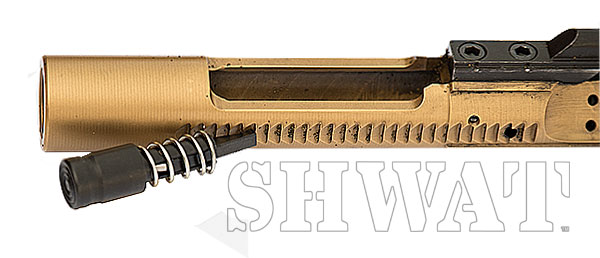The forward assist on M16s and AR-15s resulted from the initial trouble that soldiers experienced with early M16 rifles in Vietnam. Non-chrome-lined bores and chambers, incorrect propellants in the ammunition, and lack of cleaning supplies led to rampant jamming. The government requested a forward assist.
Soon the early problems were a thing of the past, and the AR-15 platform evolved into one of the most reliable weapon systems of the modern era. Along with that increase in reliability has been a remarkable proliferation of the platform. Customization of the rifles has led to countless possibilities and a number of manufacturers eliminating the forward assist to save money and/or create AR-15 “slick side” upper receivers.
All that raises the question: Is the forward assist just a vestigial structure left over from the early evolution of the rifle? Does anyone seriously use the thing? Is it still a useful feature, or is time for it to go extinct?
I’m convinced that the AR-15 forward assist remains valuable. To understand why, let’s take a look at real world scenarios where the forward assist really matters. You may not personally use the forward assist for all of the following reasons, but each example applies to some of us.
1. It allows the bolt to be closed silently. This is important in hunting, and could be important for anyone in a combat, law enforcement, or self-defense situation in certain circumstances. There are plenty of stories of hunters in close proximity to game who needed this functionality. Perhaps they rode the charging handle when they initially chambered their round and the bolt wasn’t in battery. Or perhaps they forgot to charge the gun in the first place. In both cases, silently driving the bolt carrier home with the forward assist provides a full or partial solution.
2. It allows a short-chamber. If a person, or just a dropped gun, comes out of the water with an M4, pulling the bolt back slightly allows the water to drain from the bore. Pushing the forward assist makes sure it goes back into battery.
3. It can be used for a chamber check to make sure a round is chambered. Pull the bolt back just far enough to check for a cartridge, then use the forward assist to ensure the bolt goes fully into battery. Many people do chamber checks this way.
4. If an AR-15 pattern rifle is too dirty to cycle properly using the forward assist can allow the shooter to stay active and engaged albeit in a manner more closely resembling a single shot rifle. This has been “required” in a number of engagements in the last few years by soldiers whose rifles were too dusty, dirty, and dry to function. I don’t personally see this as a good use of the forward assist, since in my opinion most of these situations could have been avoided with better discipline and training. However, if a soldier lacks the discipline to keep his weapon clean and lubed, use of the forward assist may save his life.

As useful as I find the forward assist, there are some that I avoid:
1. Chambering a damaged cartridge. Unless the situation is extreme, damaged cartridges should be discarded.
2. Loading the rifle. Like many people were, years ago I was taught to use the forward assist when loading. I was also taught to bang my magazine on my helmet and charge right-handed with two claw-fingers, and I don’t do any of that today. I load my rifle from an open bolt by dropping the bolt followed by a glance to ensure it is in battery. Or I load from a closed bolt by running the charging handle with my left hand with a glance at the chamber. I’m not saying you should not charge right handed and use a forward assist, just that I don’t.
3. Applying SPORTS. One issue I see with a lot of military training is that soldiers are not taught to understand a weapon and what they are doing with it, but to simply follow a series of steps. The SPORTS doctrine goes like this: Slap the bottom of the magazine. Pull the charging handle. Observe the open chamber area. Release the charging handle. Tap the forward assist. Shoot.
If I have a jam 1 (click instead of bang), I slap the mag, charge, and fire. My weapon stays on target and my firing hand does not leave the grip. If I have a jam 2 (bolt is not fully closed for some reason), I remove the magazine, run the charging handle a couple times, insert the magazine, charge, and fire. I would only use the forward assist if I discovered a trend of not fully chambering – something I have never seen in a functional, maintained, and lubricated weapon with functional mags.
4. I’ve seen people religiously pumping the forward assist after charging the gun for no apparent reason. I had an old Benjamin Franklin brass air rifle when I was five. The more you pumped it, the faster the pellet went. Pumping the forward assist on an AR will not give you more velocity, more lethality or – as far as I know – even more movie star prowess.
When it comes to the AR-15 forward assist, I’m clearly a believer. As a hunter, a home defender and U.S. Army veteran I simply don’t want to be without it on my AR-15s. And I’m not the only one. Creative manufacturers continue to improve the design of the forward assist. Pictured above is one such example from Forward Control Designs. What about you – Slick Side or Forward Assist? Share your thoughts on the forward assist on the SHWAT™ forum.



